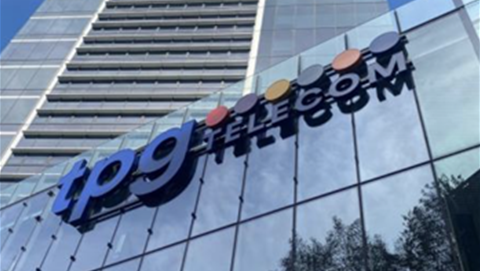Vocus is ready to start laying a submarine cable that will connect two existing cable systems, the North West Cable System (NWCS) and the Australia-Singapore Cable (ASC).
Chief executive for wholesale and international, Jarrod Nink, told the Submarine Networks World conference in Singapore today that the link, codenamed Project Highclere, has "now moved into the deployment stage".
"The cable has been manufactured and loaded onto the ship, ready to drop into the Indian Ocean," Nink said.
Regulatory filings [pdf] show that Highclere will see the deployment of a link "from an existing stub cable of the NWCS (approximately 41 km north of Port Hedland) to an offshore existing branching unit of the ASC (approximately 450 km west of the Exmouth Peninsula)."
In this filing [pdf] the cable laying ship is identified as the Alcatel Submarine Networks cable ship Il de Re.
Highclere also covers the installation of "two branching units and two cables from the new cable to the edge of the petroleum safety zone of the proposed Scarborough development", which is being touted as one of the biggest oil & gas projects in a decade; and an additional "branching unit and 'stub' to allow for a future potential connection", according to the filings.
“Project Highclere addresses each of the four pillars that our customers are seeking: latency, diversity, resilience, and hyperscale capacity,” Nink said.
The cable “will reduce latency from Australia’s predominant mining region, the Pilbara, to major data centres in Singapore, as well as providing new submarine connectivity to major offshore oil and gas producers which are heavily dependent on automation.”
The cable also adds diversity to Vocus’ international network.
“Project Highclere will provide the final piece of the puzzle in what we call the ‘Darwin-Jakarta-Singapore Cable system’, a $500 million system of interconnected cables between Darwin, Port Hedland, Perth, Christmas Island, Jakarta and Singapore”, Nink said.
Nink also detailed the capacity Vocus' plans for its $80 million terrestrial cable between Perth and Port Hedland announced last year.
The 2000 km cable will offer 38 Tbps capacity per pair and 400 Gbps wavelengths, and when it is complete the company will have “a figure-8 of redundant fibre rings across Australia’s east and west," Nink said.
The other key market in Vocus’ immediate fibre plans is the east coast.
While it’s the best-served market for fibre in the country, Nink said, “a terrestrial fibre build is around 1.4 times longer than the straight-line distance between the capital cities on this route.”
To shave that distance, and this reduce latency between capitals, Vocus has started design work on a proposed festoon-style East Coast Cable System.
“This new submarine cable system between Melbourne, Sydney and Brisbane would complement our existing coastal and inland fibre routes. The East Coast Cable System is being designed as a 1600 km system with as many as 24 fibre pairs – the highest subsea fibre count system we will have deployed," Nink said.
The East Coast Cable System will also add a third route to Vocus’ existing east coast redundancy, the importance of which Nink said has been demonstrated by recent natural disasters.
Vocus’ upgrade list over the next three years also includes: a 13-times capacity uplift on eastern state regional routes; and a five-times upgrade to the Brisbane-Sydney and Sydney-Melbourne-Adelaide routes.
“When these upgrades are complete, 400 gig services will be the new standard our customers can access across our national fibre backbone, up from 100 gig today. 100 gig will be the new standard on our regional routes, up from 10 gig today," Nink said.


























